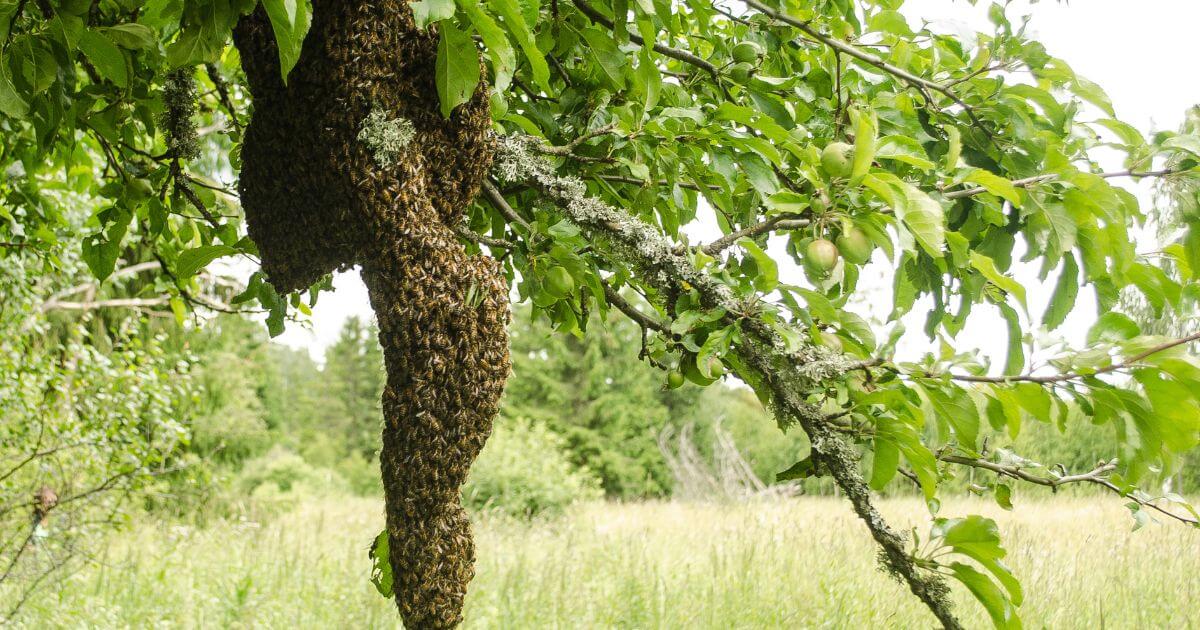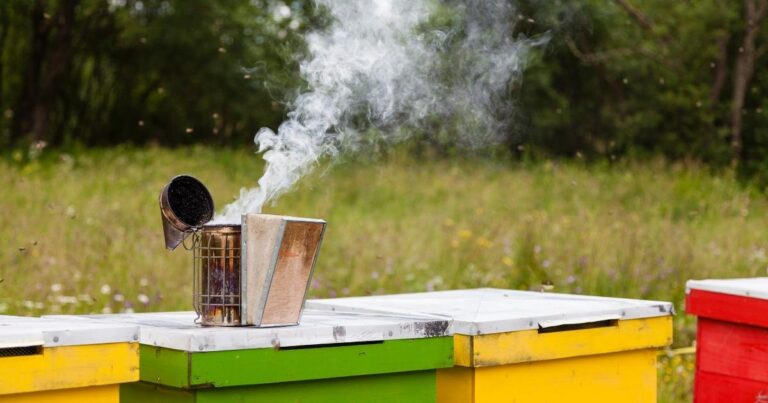Why Do Bees Swarm?
Have you ever wondered, ‘why do bees swarm?’ Here’s everything you need to know about why bees swarm.

Put simply, swarming is the process of rejuvenation, regeneration and reproduction of a honey bee colony. It is a natural part of the bees’ life cycle.
Normally, each colony of bees has just one queen. Within the hive, the queen is solely responsible for reproduction and can lay up to 1,500 eggs every day; more than her own body weight.
Queens may live for up to seven years, but their normal lifespan is between two and four years. As they age, they become less effective: their output decreases and they may contract disease.
The queens release a ‘queen pheromone’ which is closely monitored by the colony. Not only does this indicate the continued presence of the queen, but it may also be used to detect signs that she is failing or preparing to swarm.
Worker bees may instigate the deposition of a non-performing queen in a practice called ‘supersedure’. Similarly, beekeepers will often replace the queen in order to retain the vigour of the colony; a technique known as ‘requeening’.
In preparation for swarming, new queens are raised on an exclusive diet of royal jelly. Swarming is a spring phenomenon and, depending on climate, may be limited to a two-week window when conditions are ideal.
At this time, warm weather combines with extended day length and an abundance of resources, in the form of pollen and nectar. In Melbourne, swarms are most common between September to November, however, they may also be seen during other productive parts of the year.
The ‘primary swarm’ consists of the old queen together with about 60% of workers (up to 45,000 bees), and will often leave the hive prior to the emergence of the first new virgin queens. Larger colonies may produce secondary ‘afterswarms’, and in this way a successful hive may split more than once in a given year.
Initially, the swarm will alight in a temporary location not far from the original colony. The most experienced foragers will then scout for an appropriate permanent nesting site. Usually the swarm will decide upon their preferred final destination within three days; they have no stored resources and must access a ready supply of food quickly if they are to avoid starvation.
Swarms normally travel up to one kilometre from their original location, but there is anecdotal evidence of them covering five kilometres or more. The periodic relocation of colonies allows the bees to track and exploit changes in the relative abundance of resources, positioning themselves to the best advantage and therefore optimising their prospects for further expansion.
Swarming also promotes genetic diversity, since new virgin queens will mate with up to 20 drones (normally from other hives). With the departure of a large number of workers, the remnant original colony is well-provisioned for the future with plentiful stocks of honey and pollen.
In addition, swarming reduces the incidence of pests and diseases (which often centre upon the brood) through relocation to a fresh, uncontaminated environment.
Swarms of European Honey Bees are commonly encountered in suburban Melbourne and throughout Victoria. Although the bees tend not to be aggressive when swarming, they should be left alone and not aggravated in any way. Contact an experienced beekeeper or apiarist as soon as possible. Swarms may be easily removed from a temporary encampment, but once they have decided upon a permanent home this can be considerably more difficult.


